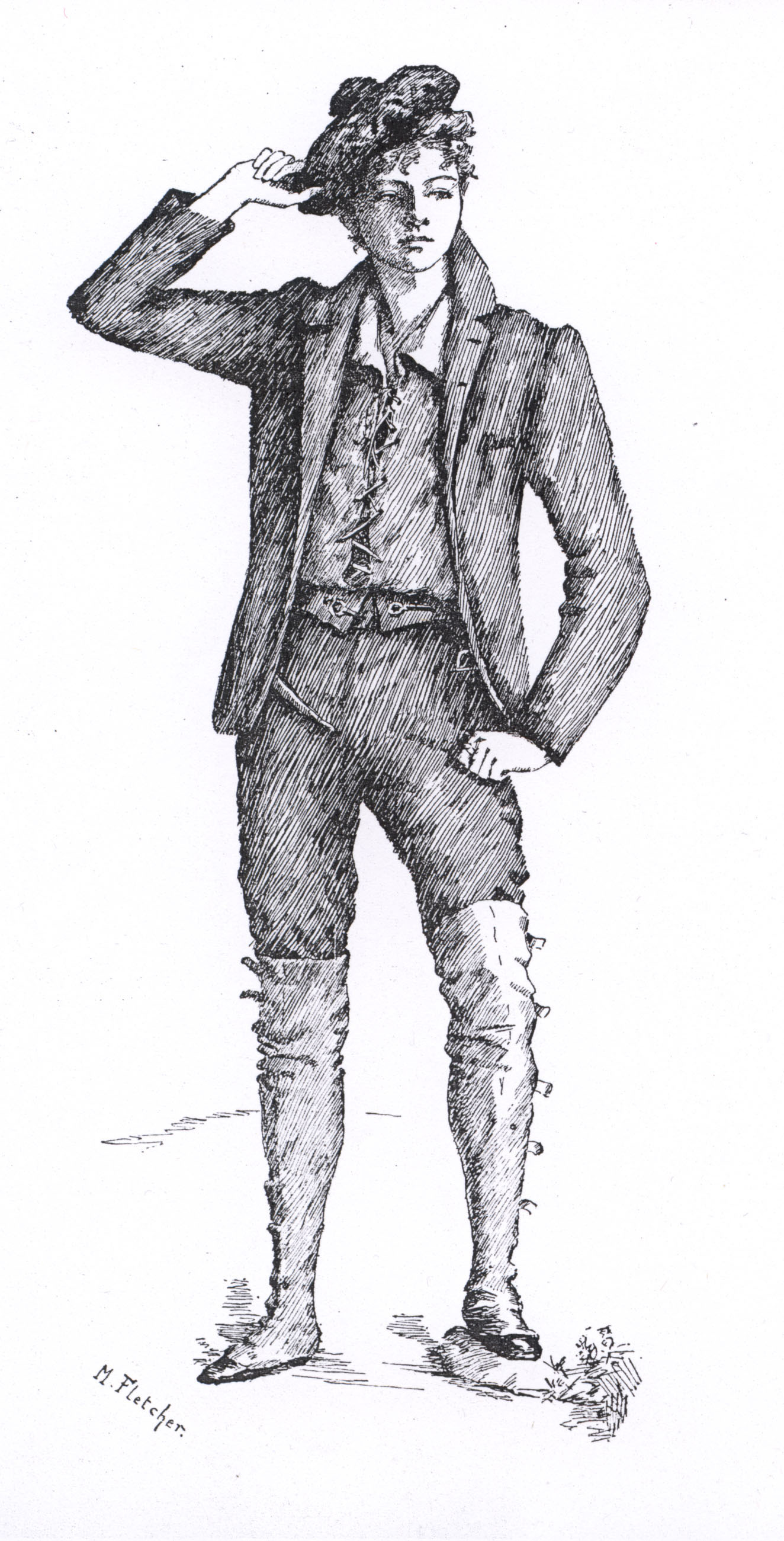Ménie Muriel Dowie
(1867 – 1945)
Ménie Muriel Dowie was the epitome of the adventurous modern woman. She was a novelist, a journalist and a cattle-breeder. Despite her strong spirit, Dowie came to grief when she adopted the same relatively lax attitude to sexual morality as did the men in her circle.
Dowie was born in Liverpool to a corn merchant’s family in 1867. Her maternal grandfather was Robert Chambers (1802-1871), author of Vestiges of the Natural History of Creation . She was educated at home, in a private school, and then at schools in Stuttgart and Bordeaux. She thereby gained the experience with languages that would stand her in good stead in future travels. Her father encouraged her to engage in the active outdoor pursuits of a country gentleman, such as shooting and fishing.
Dowie wrote and published from her teenage years onwards, and also gave numerous poetry recitals. At eighteen she was bold enough to strike out on her own, going to London to train as an actress; according to family history, she enjoyed some success on the provincial stage (Small, “Ménie Muriel Dowie”). In 1890 she travelled alone to the Carpathian Mountains in Poland (then under Austrian control), covering the country on horseback with a peasant guide; she dressed in knickerbockers and carried a revolver. She published her adventures in A Girl in the Karpathians in 1891. It was an immediate success, going through several editions in a year. She also edited a book titled Women Adventurers, confirming her status as one of their number. A strikingly beautiful woman, Dowie became known in the gossip columns and on the literary circuit.
Dowie contributed two short stories to The Yellow Book, as well as a piece of travel writing. “Wladislaw’s Advent,” set in a painter’s studio, appeared in volume 4, and “An Idyll in Millenry,” set in a woman’s hat shop, appeared in volume 10. “My Note-Book in the Weald,” about her wanderings, mainly on horseback, in Surrey and Sussex, was published in volume 12. In 1895 Dowie produced her major novel, Gallia. It is most noted for its preoccupation with eugenics as a guide for human relationships. The novel also stood out for its general explicitness regarding issues of gender equality and heterosexual relations. According to the Saturday Review critic, “The author has gone further in sheer audacity of treatment of the sexual relations and sexual feelings of men and women than any woman before.” Dowie published two further novels, The Crook of the Bough in 1898 and Love and His Mask in 1901, which dealt, as had Gallia, with difficult marriage choices.
Her literary and journalistic career was finished by scandal in 1901. Dowie had married travel writer (and later knight and MP) Henry Norman (1858-1939) in 1891. She travelled extensively with him in Europe, Asia, and North Africa. The couple had a child in 1897. However, when the boy was four and she 34, her husband sued for divorce because of her adultery with a friend of his, millionaire and mountain climber Edward Arthur Fitzgerald (1871-1931). Norman won custody of the child; Dowie was forbidden access and went abroad with Fitzgerald. She did not speak with her son again until he was a university student, though she had previously watched him play sports at Winchester when he was at school. She had no other children.
Dowie seems to have written nothing for publication after her divorce, but instead became a successful cattle breeder. She emigrated to the US in 1941 and died in Tucson, Arizona in 1945. Her death was remarked upon in The Times as having “broken an interesting link with the literary world of the nineties…an unusual personality, combining great personal attraction and sparkling wit.”
© Jad Adams 2013
Jad Adams is an Associate Research Fellow at the Institute of English, School of Advanced Study, University of London. His books include biographies of Ernest Dowson (2000) and Rudyard Kipling (2005), and Hideous Absinthe (2004). He has published papers on the Crackanthorpes, the Cumminghame Grahams, the Clarke Halls, and Ethel Colburn Mayne.
Selected publications by Ménie Muriel Dowie:
- The Crook of the Bough. London: Methuen, 1898.
- Gallia. London: Methuen, 1895.
- A Girl in the Karpathians. London: George Philip and Son, 1891.
- “An Idyll in Millinery.” The Yellow Book 10 (July 1896): 24-53. The Yellow Nineties Online. Ed. Dennis Denisoff and Lorraine Janzen Kooistra. Ryerson University. Web. May 30, 2013.
- Love and His Mask. London: William Heinemann, 1901.
- “My Note-Book in the Weald.” The Yellow Book 12 (January 1897): 39-64. The Yellow Nineties Online. Ed. Dennis Denisoff and Lorraine Janzen Kooistra. Ryerson University. Web. May 30, 2013.
- Some Whims of Fate. London: William Heinemann, 1896.
- “Wladlislaw’s Advent.” The Yellow Book 4 (Jan. 1895): 90-115. The Yellow Nineties Online. Ed. Dennis Denisoff and Lorraine Janzen Kooistra. Ryerson University. Web. May 30, 2013.
- Women Adventurers. London: T. Fisher Unwin, 1893.
Selected Publications about Dowie:
- Anon. “Gallia.” Saturday Review (23 March 1895): 383.
- Anon. “Mrs E. Fitzgerald Author and Traveller.” The Times (2 April 1945): 6.
- Cunningham, Gail. “’He-Notes’: Reconstructing Masculinity.” The New Woman in Fiction and in Fact: Fin-de-Siècle Feminisms. Ed. Angelique Richardson and Chris Willis. London: Palgrave Macmillan, 2002. 94-106.
- Forward, Stephanie. “Dowie, Ménie Muriel.” The Cambridge Guide to Women’s Writing in English . Ed. Lorna Sage. Cambridge: Cambridge UP, 1999.
- French, Patrick. The Life of Henry Norman. London: Unicorn, 1995.
- Pykett, Lyn. The Improper Feminine: The Women’s Sensation Novel and the New Woman Writing . London and New York: Routledge, 1992.
- Small, Helen. Introduction to Gallia. London: Everyman, 1995.
- – – -. “Ménie Muriel Dowie.” Dictionary of National Biography . Oxford: Oxford UP, 2004.
MLA citation:
Adams, Jad. “Ménie Muriel Dowie (1867-1945),” Y90s Biographies, 2013. Yellow Nineties 2.0, edited by Lorraine Janzen Kooistra, Ryerson University Centre for Digital Humanities, 2019, https://www.1890s.ca/dowie_bio/.
